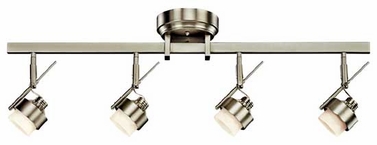| Lighting History | Lighting How To's | Light Bulbs and Light Sources | Lamp Styles, Lighting Styles | Lighting Spaces |
|---|---|---|---|---|
| Lamp and lighting history | How to Light Art How to Light a Bathroom How to calculate lighting for a room |
Different kinds of light bulbs LED lamp lighting basics |
Track Rail Lighting Create instant design using table lamps |
Outdoor Home Lighting Guide Four types of kitchen lighting |
Short for "light emitting diode," LED has been called the lighting of the future due to its durability, efficiency, long life, little power requirement, and lack of issues when turned on and off frequently. An LED lamp gets its lighting from a phenomenon in which a small amount of light is produced as a byproduct of electrical currents running through a semiconductor. Over the course of time, LED lighting technology has greatly improved allowing it to replace other lamps in many regular lighting applications.
LED lighting has its benefits when compared to other forms of lamps such as incandescent and fluorescent lighting. LED lamps are more energy efficient, using only a fraction of energy(estimated 1/3 - 1/130), lives a multitude of times longer (estimated 5 - 50 times), is more durable in construction, and does not give off too much heat. These are the major reasons why LED lamps are considered energy efficient and earth-friendly forms of lighting. Its nature has made LED lamp lights great practical applications such as in monorail lighting, track rail lighting, and landscape lighting.
Other benefits of LED lighting is that they burn clean, free of UV rays or Mercury and can last about 30,000 - 50,000 hours until they start fading away significantly. Contrary to incandescent and fluorescent lights LED lamps do not just die one day, they simply fade away over the tens and thousands of hours. Because of the long gradual process most owners of LED lights do not notice that they aren't as bright as they were in the beginning.
On the flip side, because LED lighting is so new, there is still room for improvement. LED lighting is more expensive than incandescent and fluorescent lighting due to its more difficult and costlier production. And although LED lighting is a relatively durable light, it does not do as well in warmer conditions and has a more limited temperature tolerance.
by Mia Nguyen







